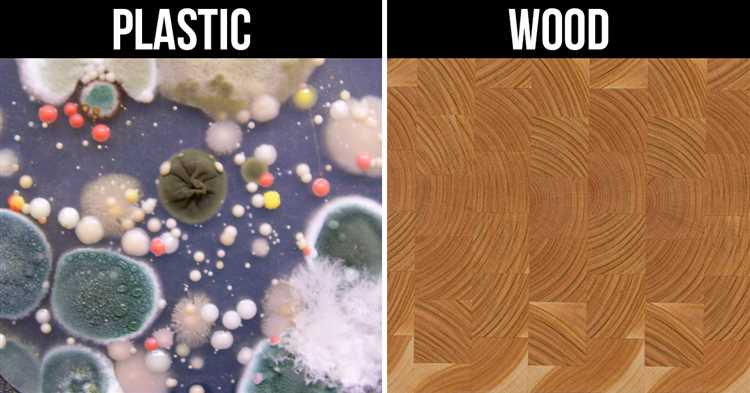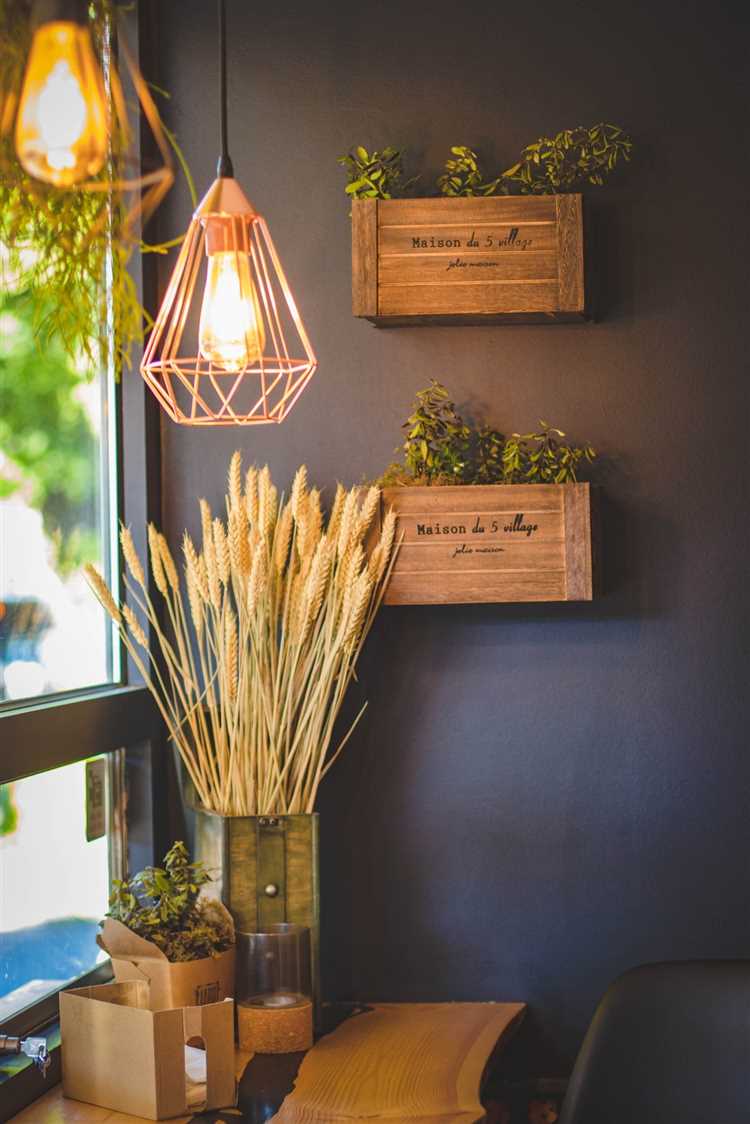
In today’s world, the choice between wood and plastic has become increasingly important. With growing concerns about environmental impact and sustainability, many people are turning to wood as a more eco-friendly alternative to plastic. Not only is wood a renewable resource, but it also offers a range of benefits that make it clear why it is the superior choice.
1. Sustainability: Unlike plastic, which is derived from non-renewable fossil fuels, wood is a fully renewable resource. Trees can be grown and harvested in a responsible and sustainable manner, ensuring a continuous supply for future generations. By choosing wood over plastic, we are actively contributing to the preservation and protection of our environment.
2. Durability: Wood is naturally strong and durable, making it an excellent choice for a variety of applications. Whether it’s furniture, flooring, or construction materials, wood can withstand daily wear and tear and still maintain its integrity. Unlike plastic, which can break or degrade over time, wood offers long-lasting quality that can stand the test of time.
3. Aesthetic Appeal: One of the most significant advantages of wood over plastic is its natural beauty. The unique grain patterns and colors found in different types of wood create a warm and inviting atmosphere in any space. Wood furniture and décor are often considered timeless and can add a touch of elegance and sophistication to any home or office.
Overall, the benefits of choosing wood over plastic are undeniable. By opting for wood products, we are making a conscious decision to support sustainability and reduce our ecological footprint. Additionally, the durability and aesthetic appeal of wood make it a practical and stylish choice for a wide range of applications. So why settle for plastic when you can have the beauty and sustainability of wood?
- Natural and Sustainable Material
- Sustainability
- Health and Safety Benefits
- Great Durability and Strength
- Renewable Resource
- Environmental Impact
- Durability and Longevity
- Aesthetically Pleasing
- Enhancing the Ambiance
- Eco-Friendly Choice
- Biodegradable and Eco-Friendly
- Healthier Choice for Humans and the Environment
- Improved Indoor Air Quality
- Reduced Waste and Pollution
- Q&A:
- What are some benefits of choosing wood over plastic?
- Why is wood considered a more sustainable choice compared to plastic?
- What are the advantages of wood’s durability over plastic?
- How does wood’s aesthetic appeal make it a preferred choice over plastic?
- What are the environmental benefits of choosing wood over plastic?
- What are the benefits of choosing wood over plastic?
Natural and Sustainable Material
Wood is a natural and sustainable material that has been used for centuries in various applications. It is not only aesthetically pleasing but also has many environmental benefits compared to plastic. Unlike plastic, wood is a renewable resource that can be replenished through responsible forestry practices.
One of the main advantages of wood is its biodegradability. When wood products reach the end of their life cycle, they can be easily disposed of without causing significant harm to the environment. On the other hand, plastic takes hundreds of years to decompose, and even then, it breaks down into microplastics that continue to pollute the soil and water.
Sustainability
Wood is also a carbon-neutral material, meaning it does not contribute to climate change. During its growth, trees absorb carbon dioxide from the atmosphere, helping to reduce greenhouse gas emissions. Additionally, wood products store carbon throughout their lifetime, which makes them an effective way to sequester carbon and mitigate climate change.
The production of wood products requires less energy compared to plastic. Wood processing and manufacturing have a lower carbon footprint and consume less fossil fuels, making them environmentally friendly options. Moreover, wood can be easily recycled and repurposed, reducing the need for new raw materials and minimizing waste generation.
Health and Safety Benefits
Wooden products are also healthier and safer to use compared to plastic. Unlike plastic, wood does not contain harmful chemicals such as phthalates and bisphenol A (BPA) that can leach into food or water. This makes wood a preferable choice for cutting boards, food containers, and utensils.
Wooden furniture and structures also have better thermal properties compared to plastic, providing natural insulation against heat and cold. This not only improves energy efficiency but also creates a more comfortable living environment.
In conclusion, wood is a natural and sustainable material that offers numerous benefits over plastic. It is environmentally friendly, biodegradable, and has a lower carbon footprint. Choosing wood over plastic is not only a responsible choice but also a better option for the health and well-being of both individuals and the planet.
Great Durability and Strength
When it comes to durability and strength, wood is a fantastic choice that outshines plastic. Wood is naturally strong and can withstand considerable wear and tear without breaking or deteriorating. Whether you’re using wood for furniture, flooring, or outdoor structures, you can trust that it will stand the test of time.
Wooden furniture and flooring, for example, can last for decades with proper care and maintenance. Unlike plastic, wood doesn’t easily scratch, dent, or chip, making it a more reliable option for long-term use. Additionally, wood has the ability to self-heal to some extent, as it can absorb small impacts and adapt to changes in temperature and humidity.
Another advantage of wood is its resistance to extreme weather conditions. Unlike plastic, wood doesn’t become brittle or warped under high temperatures or constant exposure to sunlight. It remains stable and retains its shape, making it an ideal choice for outdoor structures like decks, fences, and pergolas.
Furthermore, wood is a renewable resource when sourced responsibly. Choosing wood over plastic helps to reduce the carbon footprint and support sustainable forestry practices. By opting for wood products, you’re making an eco-friendly choice that contributes to the overall well-being of the planet.
Renewable Resource
One of the key benefits of choosing wood over plastic is that wood is a renewable resource. Unlike plastic, which is derived from non-renewable fossil fuels, wood is sourced from trees which can be replanted and grown again. This makes wood a more sustainable choice for the environment.
When trees are harvested for wood products, new trees can be planted in their place. These new trees absorb carbon dioxide from the atmosphere and release oxygen, helping to reduce greenhouse gas emissions and combat climate change. In contrast, the production of plastic contributes to the depletion of fossil fuel reserves and the release of harmful greenhouse gases.
Environmental Impact
Choosing wood over plastic can have positive effects on the environment. The use of wood products helps to increase forest coverage, which provides habitat for wildlife and promotes biodiversity. Trees also act as natural air filters, removing pollutants and improving air quality.
Durability and Longevity
In addition to being a renewable resource, wood is known for its durability and longevity. When properly maintained, wooden products can last for many years, reducing the need for frequent replacements and minimizing waste.
Furthermore, the natural beauty of wood adds a warm and timeless aesthetic to any space, making it a popular choice for interior design and architecture.
Overall, choosing wood over plastic not only has environmental advantages but also offers long-term benefits in terms of durability and aesthetics. By opting for wood products, we can support sustainable forestry practices, reduce our carbon footprint, and contribute to a greener future.
Aesthetically Pleasing
One of the key advantages of choosing wood over plastic is its aesthetic appeal. Wood has a timeless and natural beauty that cannot be replicated by plastic. The unique grain patterns and warm tones of wood create a feeling of warmth and comfort in any space.
Wood also has the ability to age gracefully, developing a rich patina over time. This natural aging process adds character and charm to the wood, making it even more visually interesting. In contrast, plastic has a synthetic and artificial appearance that can often look cheap and mass-produced.
In addition to its natural beauty, wood can also be easily customized to fit any design or style preference. It can be stained, painted, or left untreated to showcase the natural wood grains. This versatility allows for endless possibilities when it comes to incorporating wood into interior and exterior design schemes.
Enhancing the Ambiance

The aesthetic appeal of wood extends beyond its visual impact. Wood also has the ability to enhance the ambiance of a space. Its natural texture and tactile qualities create a sense of warmth and coziness that plastic simply cannot replicate.
Studies have shown that exposure to natural materials like wood can have a positive effect on our overall well-being. Being surrounded by wood can help reduce stress levels, improve concentration, and promote a sense of calmness and relaxation.
Eco-Friendly Choice
Another important aspect to consider is the environmental impact of choosing wood over plastic. Wood is a renewable resource, while plastic is derived from fossil fuels and contributes to pollution and climate change. By choosing wood, we can help reduce our carbon footprint and promote sustainability.
Furthermore, wood is biodegradable, meaning it can naturally decompose without leaving harmful waste behind. On the other hand, plastic takes thousands of years to break down, leading to significant pollution of our oceans and landfills.
Biodegradable and Eco-Friendly

Choosing wood products over plastic is a more sustainable choice due to their biodegradability and eco-friendliness. Unlike plastic, which can take hundreds or even thousands of years to decompose, wood is a natural material that breaks down relatively quickly when discarded.
Wood is derived from renewable sources, such as trees, which can be replanted to ensure a continuous supply. In contrast, plastic is made from non-renewable fossil fuels, contributing to the depletion of these resources. By selecting wood, we can help reduce our dependency on finite resources and decrease our carbon footprint.
Furthermore, the production of wood products requires less energy and generates fewer greenhouse gas emissions compared to plastic. The process of extracting, refining, and manufacturing plastic involves a significant amount of energy, contributing to air and water pollution. Wood, on the other hand, requires less energy and emits fewer harmful pollutants during manufacturing.
Additionally, wood can be recycled or reused in various ways, prolonging its lifespan and reducing waste. It can be repurposed into furniture, construction materials, or even used as biomass for energy production. Plastic, on the other hand, often ends up in landfills or oceans, where it poses a serious threat to wildlife and ecosystems.
By opting for wood instead of plastic, we can support a more sustainable and environmentally friendly economy. From reducing waste and carbon emissions to protecting natural resources and ecosystems, choosing wood is a responsible choice for a greener future.
Healthier Choice for Humans and the Environment
When it comes to the health of humans and the environment, choosing wood over plastic can have significant benefits. Wood is a natural, renewable resource that can be sustainably harvested, whereas plastic is made from non-renewable fossil fuels.
One of the main health benefits of choosing wood over plastic is that wood does not leach harmful chemicals into the environment. Plastic, on the other hand, can release toxic substances such as phthalates and bisphenol A (BPA) into the air and water. These chemicals have been linked to numerous health issues, including hormone disruption, reproductive problems, and certain types of cancer.
Improved Indoor Air Quality
Using wood products in indoor environments can also contribute to improved indoor air quality. Unlike plastic, wood does not emit volatile organic compounds (VOCs) that can contribute to poor air quality and respiratory problems. This is especially important for individuals with allergies or respiratory conditions.
Reduced Waste and Pollution
Choosing wood over plastic also helps to reduce waste and pollution. Wood is biodegradable, meaning it can break down naturally in the environment over time. Plastic, on the other hand, can take hundreds of years to decompose and often ends up in landfills or polluting our oceans.
Additionally, the production of plastic releases greenhouse gases and other pollutants into the atmosphere. By choosing wood products, we can help mitigate climate change and reduce our carbon footprint.
Overall, opting for wood instead of plastic is a healthier choice for both humans and the environment. It not only avoids the harmful effects of toxic chemicals but also helps to improve air quality and reduce waste and pollution. By making conscious choices, we can move towards a more sustainable and healthier future.
Q&A:
What are some benefits of choosing wood over plastic?
There are several benefits of choosing wood over plastic. Firstly, wood is a natural and renewable resource, while plastic is derived from petroleum, a finite resource. Secondly, wood products are biodegradable and will break down over time, while plastic can take hundreds of years to decompose. Additionally, wood is generally more durable and can withstand heavy use and impact better than plastic. Lastly, wood has a more aesthetic appeal and adds a warm and natural look to any space.
Why is wood considered a more sustainable choice compared to plastic?
Wood is considered a more sustainable choice compared to plastic for several reasons. Firstly, wood comes from trees, which are renewable resources. When trees are harvested, new trees can be planted to replace them. On the other hand, plastic is derived from petroleum, which is a finite resource that takes millions of years to form. Secondly, wood is biodegradable and can decompose naturally, while plastic takes hundreds of years to break down. Lastly, wood products can be recycled or repurposed, reducing the amount of waste sent to landfills.
What are the advantages of wood’s durability over plastic?
Wood is often more durable than plastic, making it a better choice for certain applications. Wooden products, such as furniture or kitchen utensils, can withstand heavy use and impact without easily breaking. Plastic, on the other hand, is more prone to cracking or shattering under pressure. This durability of wood ensures that the products last longer and do not need to be replaced as frequently as plastic ones, resulting in cost savings in the long run. Additionally, the strength of wood allows it to carry heavier loads and makes it suitable for construction purposes.
How does wood’s aesthetic appeal make it a preferred choice over plastic?
The natural beauty and warmth of wood make it a preferred choice over plastic for many people. Wood has unique grain patterns and colors that give it a distinct and inviting appearance. Many find the natural look of wood more visually appealing and comforting compared to the synthetic and often uniform appearance of plastic. The use of wood in interior design or furniture can create a cozy and timeless atmosphere that is difficult to achieve with plastic materials. Wood’s aesthetic appeal adds a touch of elegance and sophistication to any space.
What are the environmental benefits of choosing wood over plastic?
Choosing wood over plastic has several environmental benefits. Firstly, wood is a renewable resource, meaning that it can be replenished naturally. This reduces the reliance on finite resources, such as petroleum, used to produce plastic. Secondly, wood products are biodegradable and will break down over time, while plastic can take hundreds of years to decompose, contributing to landfill waste. Additionally, wood can be sourced locally, reducing the carbon footprint associated with transportation. Finally, wood can be recycled or repurposed, further reducing waste and energy consumption compared to plastic.
What are the benefits of choosing wood over plastic?
Choosing wood over plastic offers several benefits. Firstly, wood is a renewable resource, while plastic is made from non-renewable fossil fuels. Secondly, wood is biodegradable, meaning it can break down naturally without causing harm to the environment. Plastic, on the other hand, takes centuries to decompose and contributes to pollution. Additionally, wood products can be recycled or repurposed, reducing waste and promoting sustainability.